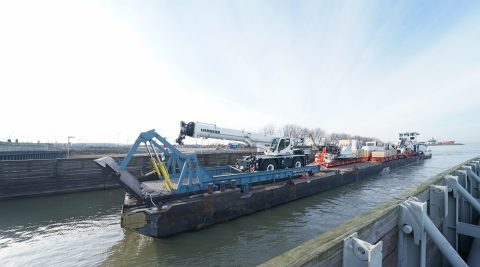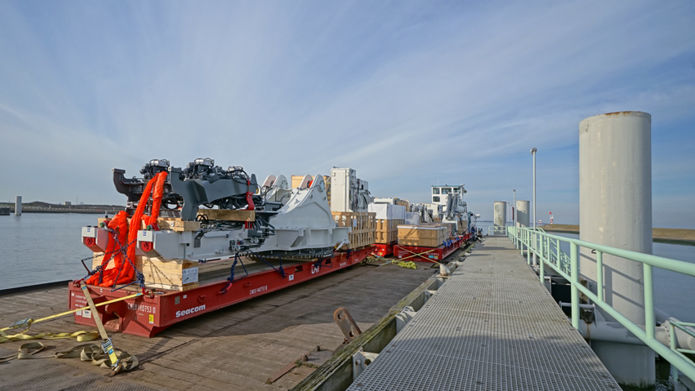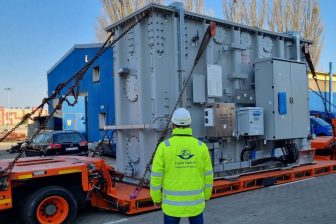
Wallenius Wilhelmsen to drive more breakbulk to its Zeebrugge terminal
Wallenius Wilhelmsen has partnered up with pontoon barge operator Victrol to trial a RoRo pontoon barge solution in an attempt to make its terminal in Zeebrugge more accessible for breakbulk. The pontoon barge would move breakbulk from the port of Antwerp to the Zeebrugge terminal.
Barge transportation using the inland waterways between these two destinations is nothing new, but by using a pontoon barge that comes with a ramp, breakbulk can be placed on handling equipment such as roll trailers and safely rolled onboard the pontoon without the need for additional lifting, Wallenius Wilhelmsen said in its statement.
Manoeuvred by a push boat, the Victrol barges used in the trial are also designed to fit the width of the canals to Zeebrugge port. Over recent years, regular barges have increased in size, often making this type of transportation unavailable and uneconomical to breakbulk OEMs looking to access worldwide deep-sea liner services from Zeebrugge via inland waterways.

Wallenius Wilhelmsen wraps up phase one
Liebherr products were transported during the first phase of the trial. After arrival at the terminal of International Car Operators in the port of Antwerp, Wallenius Wilhelmsen teams placed the products onto roll trailers which were rolled onboard the Victrol pontoon via a RoRo ramp.
“With this trial, we’re aiming to offer a one-stop solution for customers,” explains Carsten Wendt, senior manager, global industrial account development, Wallenius Wilhelmsen. “In the past the size of barges has meant limited accessibility, so we wanted to respond to our customers’ needs to find a solution for transporting breakbulk via inland waterways – and we hope pontoon barges will enable us to do just that.”
Using inland waterways has always been a more environmentally friendly way to transport products domestically since the share of freight road traffic is reduced.
“Our goal is to create a symbolic inland ‘RoRo water bridge’ connecting the 70 kilometres between Antwerp and Zeebrugge,” says Werner Van Dessel, sales development manager at Wallenius Wilhemsen. “In time, we hope this approach will also take trucks off the road, thereby helping our customers to reduce their emissions.”
As part of the trial for example, over 680 freight tonnes of Liebherr products were transported by barge. To transport the same cargo over road would require about 10 to 12 truck loads.

Seamless operations in the future
Following the first phase of the barge trial, the team will now evaluate the outcome to determine if this can be offered as a permanent solution.
“By partnering with Liebherr, subcontractor International Car Operators in Antwerp, the barge operator Victrol and the Port Authority of Zeebrugge, we hope that this barge trial will result in a permanent solution offering customers improved accessibility to Zeebrugge, reduce the proportion of trucks on public roads and support our sustainability ambitions,” adds Wendt.
The trial also highlights the potential for effective collaboration between both ports, which will officially merge to become the Port of Antwerp-Bruges in April this year. “This is a compelling example of how the ports of Antwerp and Zeebrugge can successfully work together in future to strengthen their position in the global supply chain and offer customers better access, competitive solutions for transporting breakbulk,” says Van Dessel.



